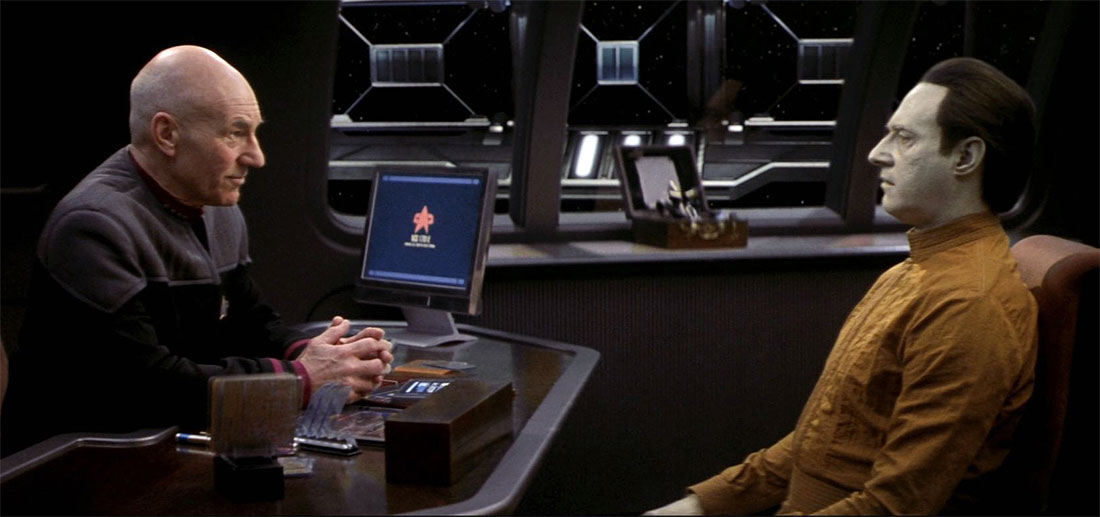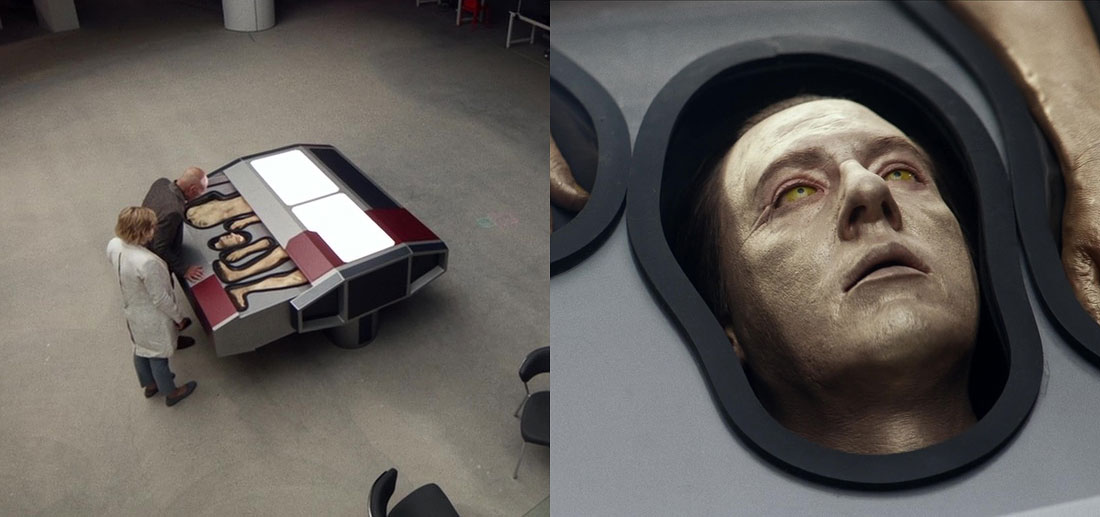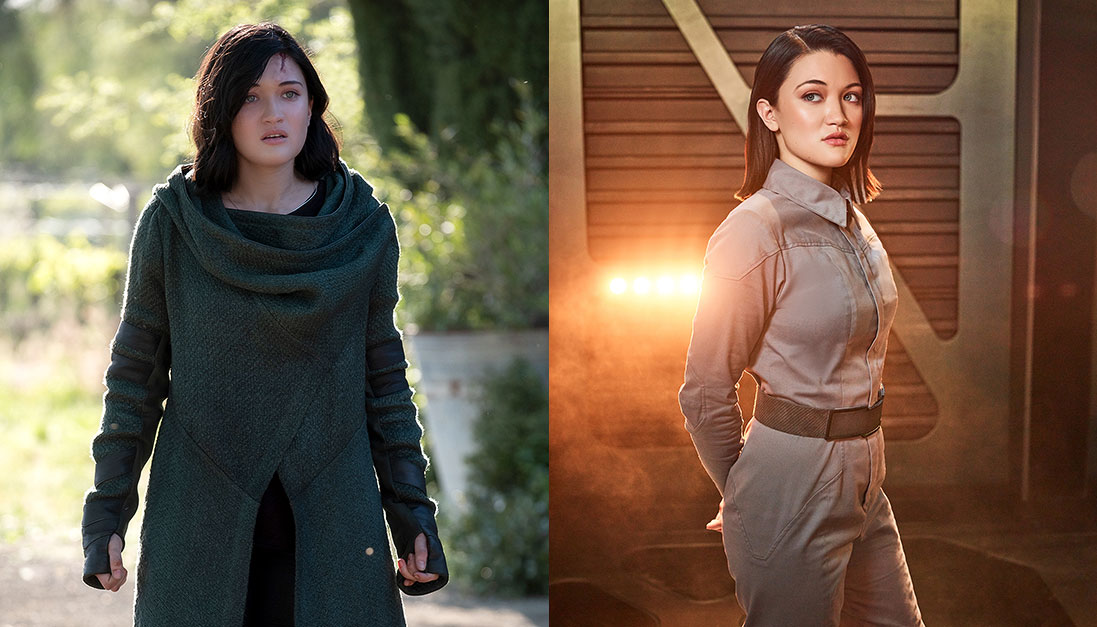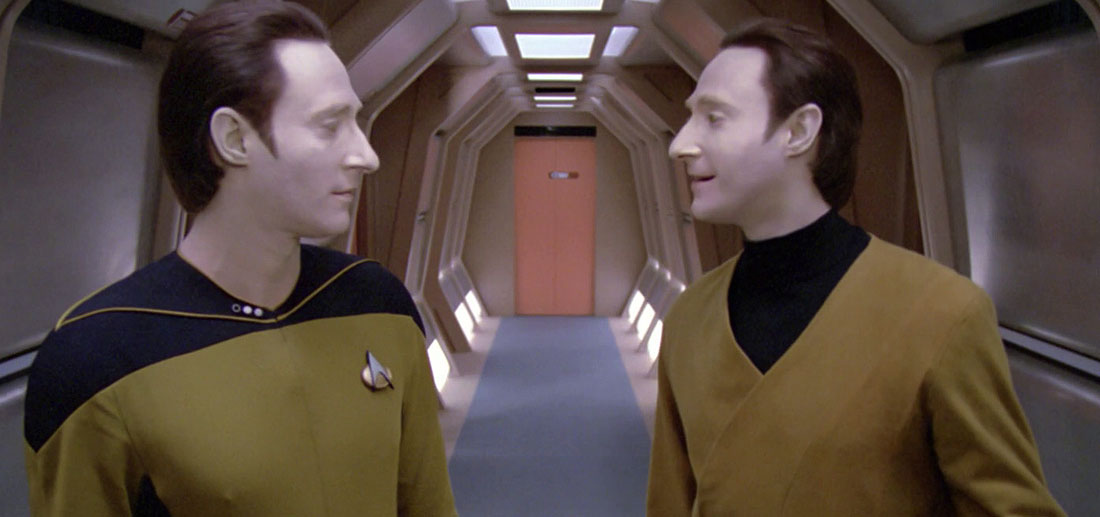Star Trek: Picard premiered this morning on CBS All Access and fans are already speculating about how the story will unfold over the next nine episodes of the season — and last week at the Picard press tour we got a chance to hear from the series’ producers on how “Remembrance,” and Season 1 as a whole, will tie back into the last Captain Picard adventure.
SPOILER WARNING: This article contains major spoilers for “Remembrance,” the first episode of ‘Star Trek: Picard.’

In 2002’s Star Trek: Nemesis, one of Data’s final acts is to take his personal programming — in the form of ‘memory engrams’ — and transfer a copy to the prototype android B-4, in an attempt to upgrade his ‘younger brother’ to be as functional as Data himself.
DATA: Captain Picard agrees that the B-4 was probably designed with the same self-actualisation parameters as myself. If my memory engrams are successfully integrated into his positronic matrix, he should have all my abilities.
LA FORGE: Yes, but he would have all your memories as well. Do you feel comfortable with that?
DATA: I feel nothing, Geordi. It is my belief that with my memory engrams he will be able to function as a more complete individual.
After Data was killed destroying the Scimitar at the end of the film, B-4 began to mutter the words to “Blue Skies” — the song sung by Data in the opening of the movie — offering a glimmer of hope that the fallen officer might not be gone forever after all.

Jumping ahead now to Star Trek: Picard, the former Enterprise captain encounters B-4 again years later — only this time, finding the android disassembled and under the care of Dr. Agnes Jurati (Alison Pill) at the Daystrom Institute in Okinawa, Japan.
Despite the hope offered at the end of Nemesis, Jurati explains that Data’s transfer to B-4 didn’t quite work out as hoped.
JURATI: He’s an inferior copy. Data tried to download the contents of his neural net into B-4 just before his death… almost all of it was lost. Ultimately, B-4 wasn’t much like Data at all; in fact, no other synth has been.

While on the surface, this reveal of B-4’s ultimate failure may seem to cut off the thread that Star Trek: Nemesis left hanging, we caught up with series producers Akiva Goldsman and Michael Chabon at the Los Angeles press tour and heard about how that seemingly-closed story from Nemesis may not just be over quite yet.
AKIVA GOLDSMAN: There are so many implicit assumptions in that [idea that] I cannot confirm or deny!
MICHAEL CHABON: We had to start [with ‘Nemesis’ because] if you’re going to continue to tell the story of Picard, you have to look at the last time you saw him. So the events and conclusion of ‘Nemesis’ were always part of the recipe for us.
GOLDSMAN: I think we’re dancing around [something] that’s an assumption in terms of what [story points] we’ve closed off… and what we haven’t.
CHABON: It’s a question we want you to be asking!
GOLDSMAN: I mean, it’s funny, in serialized television, your first three episodes are like your first act. Any good first act sets up some things that are seemingly apriori, and then it’s like, “Oh well, maybe that’s not accurate.” Remember, part of what we’re doing is making it for [fans], but also for my wife who has never seen an episode of ‘Star Trek,’ right?
So the reestablishment of the baseline — in order to create expectations — is really complex, where you have something that some people love so deeply, and then there are some people have no understanding [of why] that [Data to B-4] download is significant.
The downloads from ‘Nemesis’ will continue to be significant.

While B-4’s part in the Star Trek: Picard story remains to be seen, the android connection to Data continues in the dual lives of Dahj and Soji Asha, a pair of synthetic twins created by cyberneticist — and one-time Next Generation guest character — Bruce Maddox.
Both “daughters of Data,” as Picard speculatively calls them, are portrayed by actor Isa Briones in a secretive dual role only revealed in the final moments of “Remembrance.” The actor told us during the lead-up to the series premiere about how even she was kept in the dark about her two-part performance until late in the audition process.
ISA BRIONES: Um, well I think the, the interesting part about it, funny, I didn’t know I was going to be playing two characters until I was auditioning. I didn’t know until finally, one of the casting people was like, “Oh yeah, one of the things that is really big for the character is, you know, the twin thing.” I was like, “I’m sorry?”
So that was kind of a, you know, a learn as you go situation. Because going into it, I didn’t know, but I think you’ll definitely see a lot of [Soji]; she is kind of your point person for who this girl is.
It’s also so cool to learn how to make that dynamic work, of how I am going to portray that these are two separate people — and that was definitely a learning process. But hey, I got to see Brent [Spiner] doing that all the time when I went back and watched ‘The Next Generation’ — so I had the best people to learn from.
As Briones notes, her double duty as a pair of similar synthetics echoes the many times Brent Spiner played one of the various members of the “Soong family” — Data, Lore, B-4, and even Noonien Soong himself — often being on-screen more than once at a time.

While Dahj’s story seemed to meet its end at the climactic rooftop fight in “Remembrance,” we don’t know yet if Soji Asha is the only version of Briones still out there in the Star Trek: Picard world; with the many references to a population of “synths” leading up to the events of 2399, perhaps we’ll see even more copies of Maddox’s work as the series continues.
![]()
Star Trek: Picard continues on January 30 with “Maps and Legends,” the second episode of the season.
